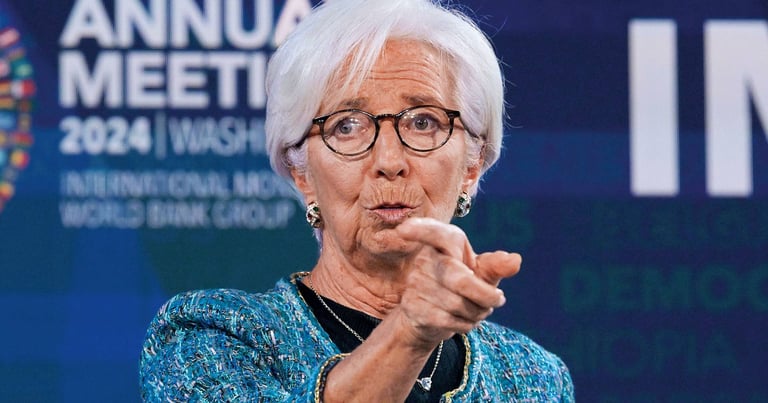ECB Warns of Looming Debt Crisis Amid Rising Eurozone Vulnerabilities
November 21, 2024
The European Central Bank (ECB) recently published its annual financial stability report, highlighting increasing vulnerabilities in public debt within the Eurozone.
The report warns of the risk of a new sovereign debt crisis, driven by rising debt levels, stagnant growth, and a tightening monetary policy after nearly a decade of accommodative measures.
Specific debt ratios are alarming, with Greece at 163.6%, Italy at 137%, and France at 112.2% of their GDP, raising concerns about public debt sustainability.
Despite recent reductions in debt ratios, the ECB cautions that deteriorating vulnerabilities could reignite fears over public debt sustainability and prompt a reassessment of debt risk.
Weak economic growth forecasts for the next two years, combined with risky fiscal situations, are contributing to the rising vulnerability of public debt across several Eurozone economies.
Budgetary challenges persist in many eurozone countries, exacerbated by structural issues such as low potential growth and increased political uncertainty.
Private sector vulnerabilities could lead to higher financing costs, putting additional pressure on the budgets of businesses and households, particularly after a period of high inflation and rapid interest rate hikes.
The industrial sector in Europe is bracing for a second consecutive year of recession, which is contributing to disappointing growth in the region.
Recent geopolitical developments, including the potential re-election of Donald Trump and proposed tariffs on foreign goods, threaten to further harm the European economy and public finances.
Even traditionally 'frugal' Northern European countries, such as Germany, are showing vulnerabilities, with debt levels exceeding the EU's 60% debt-to-GDP limit despite constitutional norms.
In this uncertain financial context, the report indicates potential for 'negative surprises' and 'abrupt changes' in investor sentiment, which could increase volatility in the markets.
While the interconnectedness of banks across eurozone nations remains a concern, current capital ratios and financial cushions in the banking system are stronger than during the financial and sovereign debt crises a decade ago.
Summary based on 2 sources